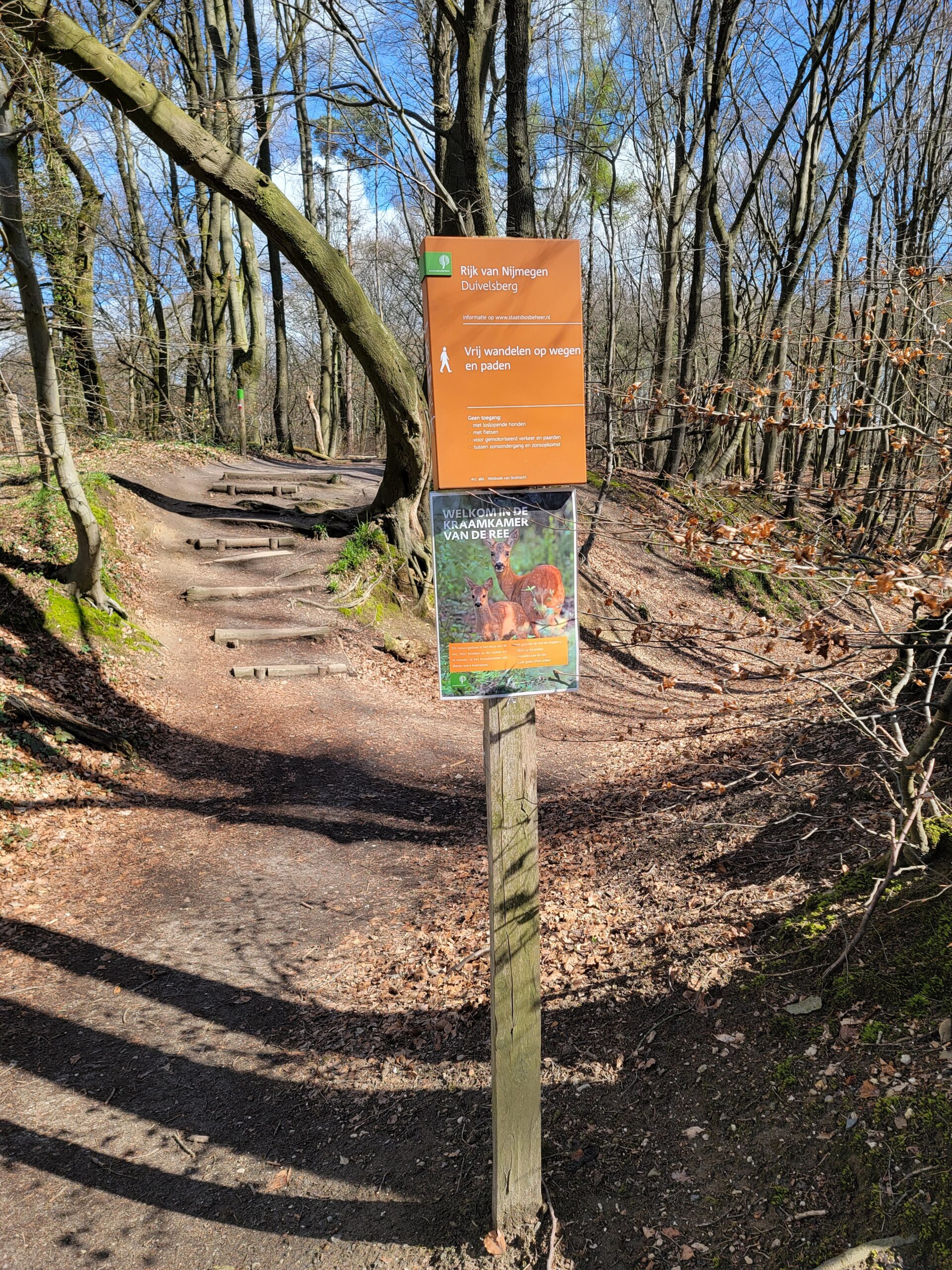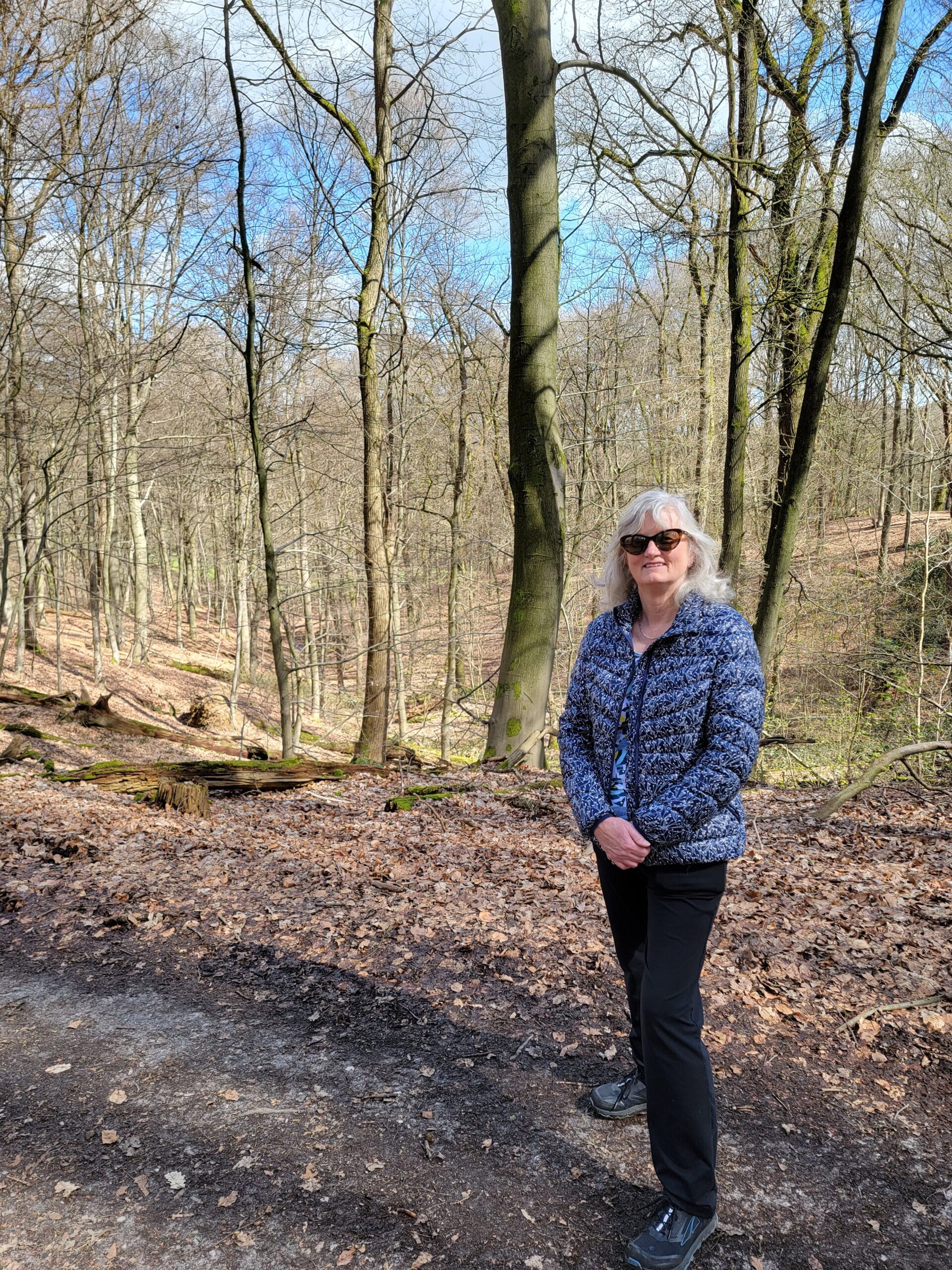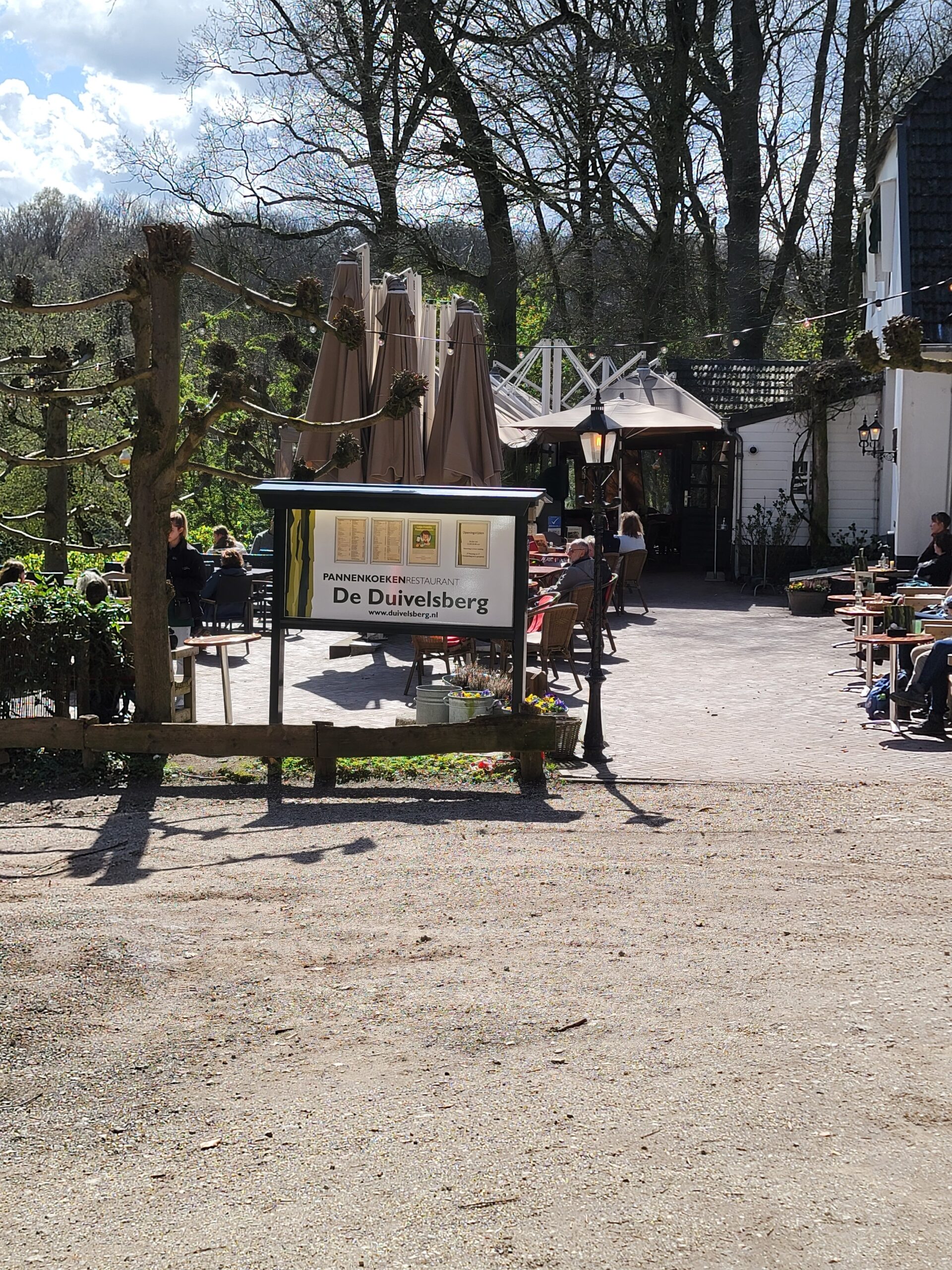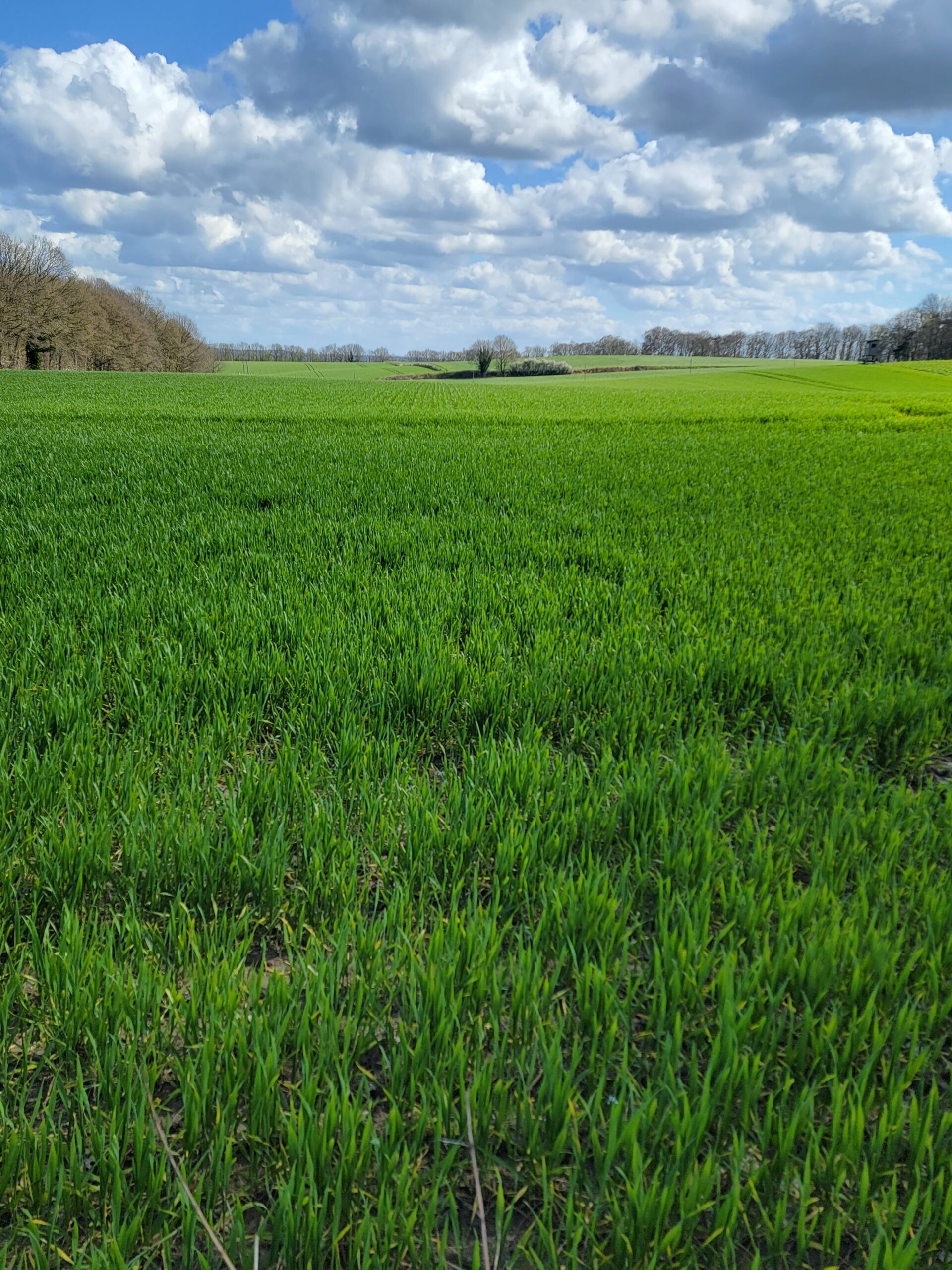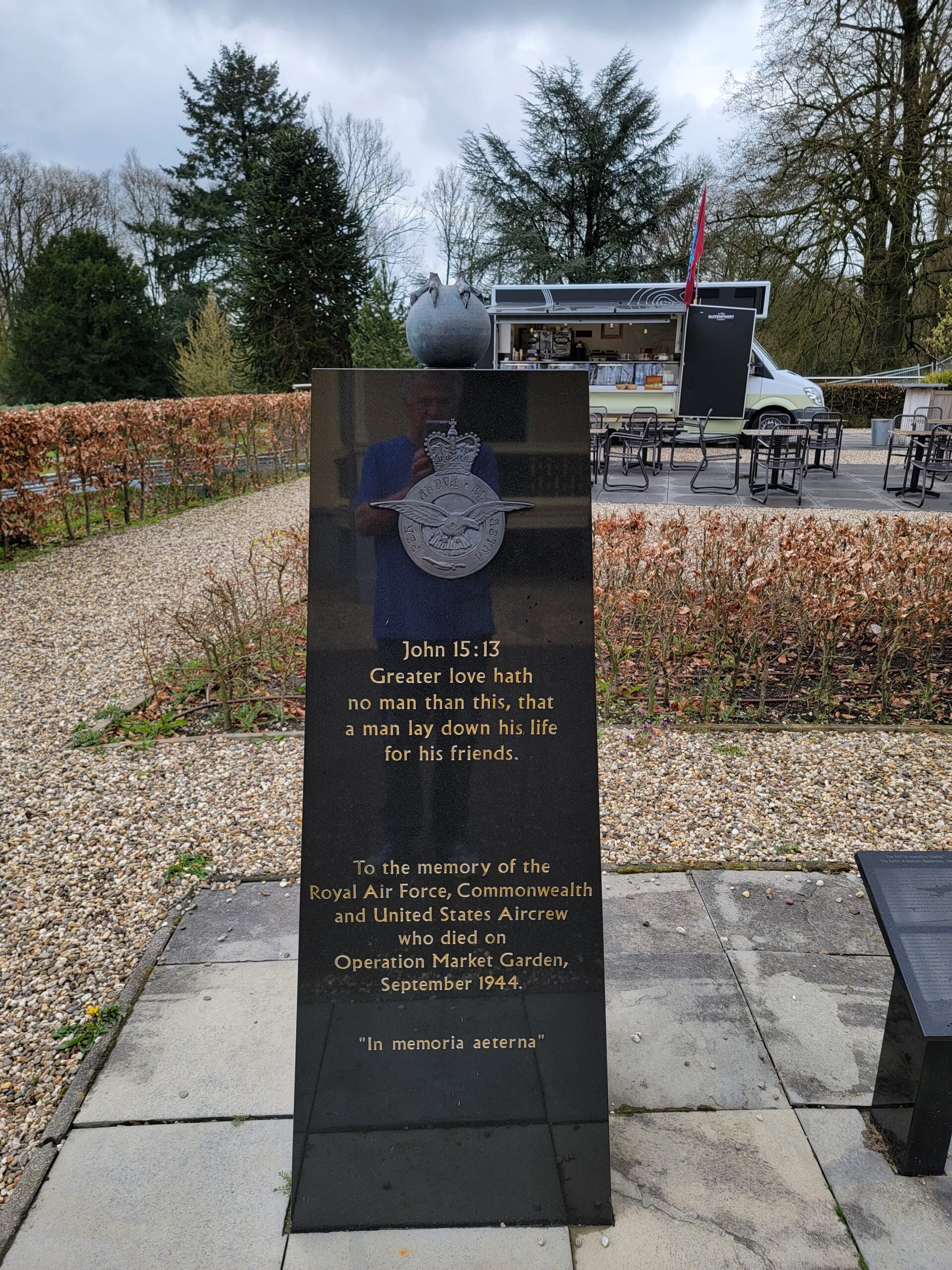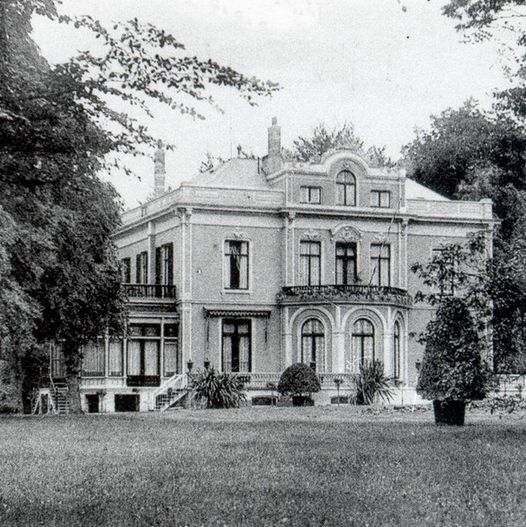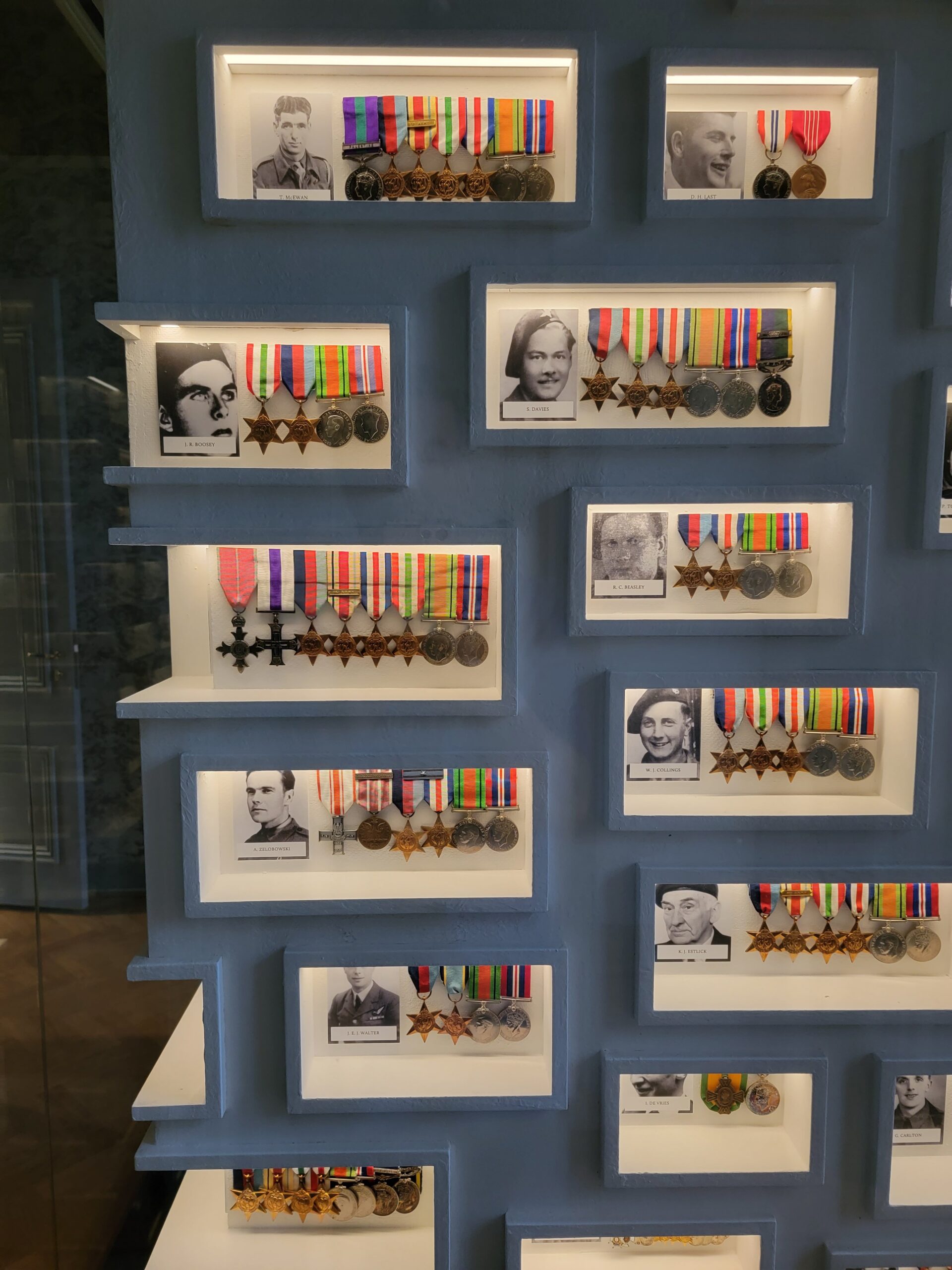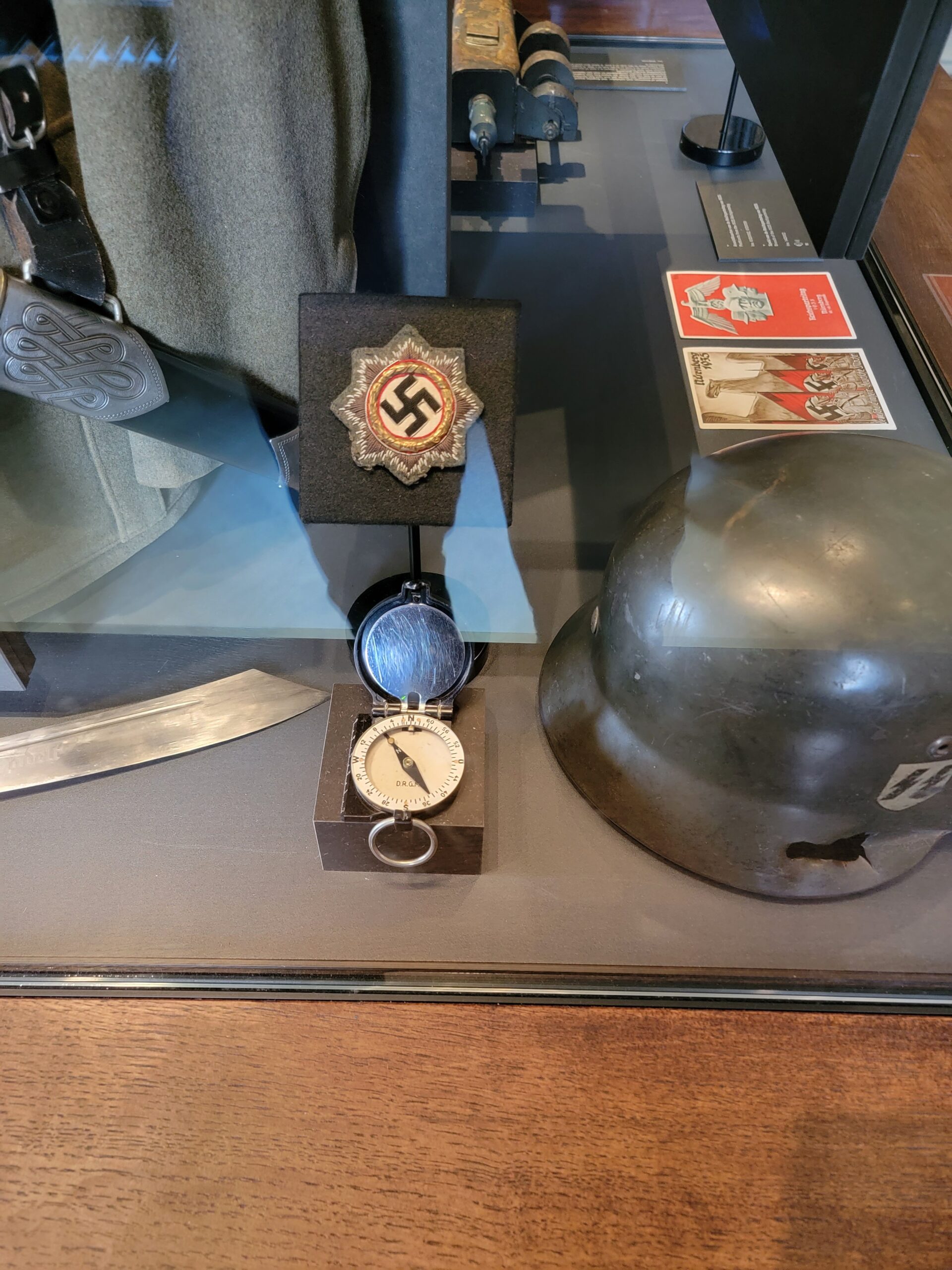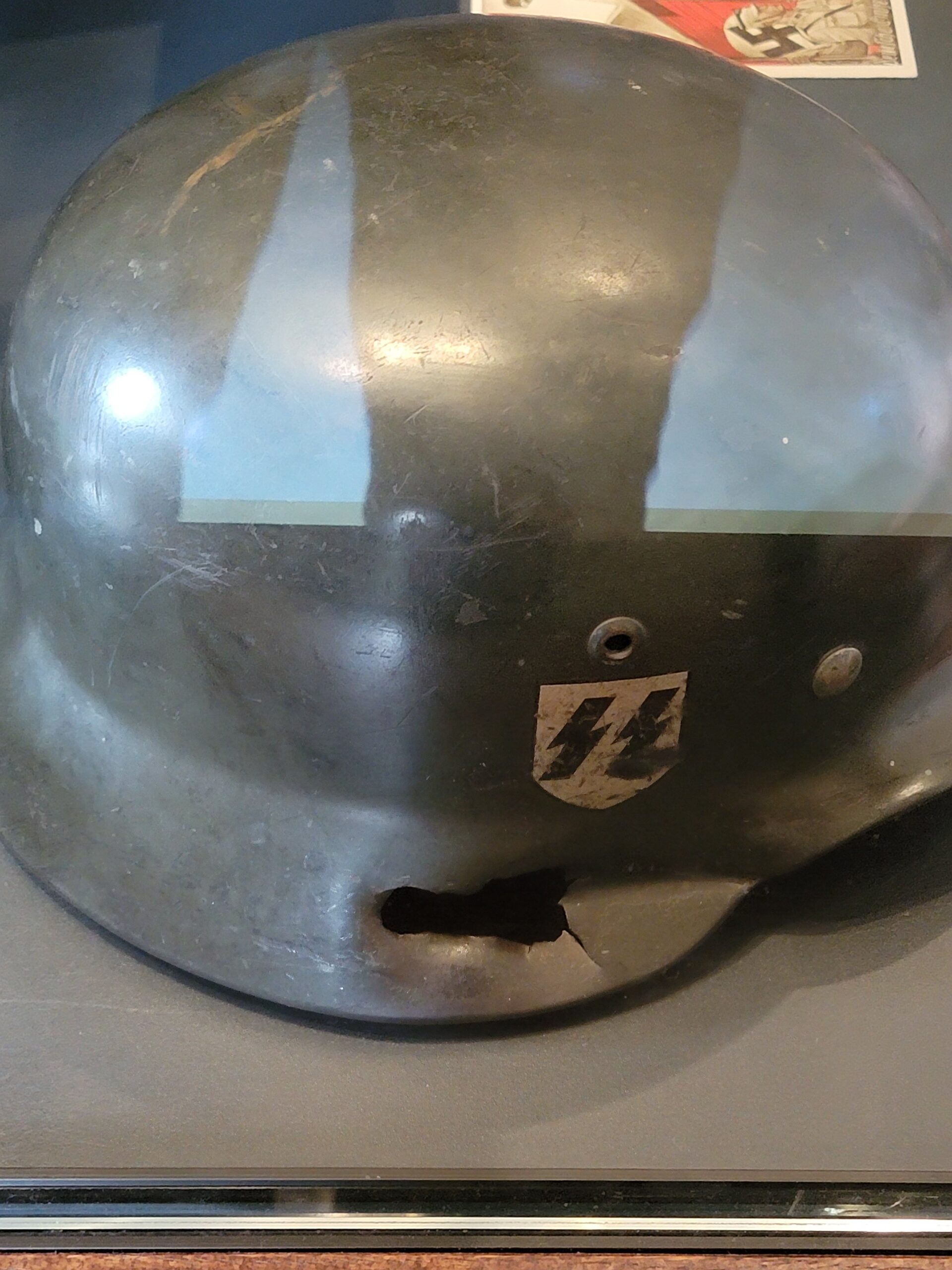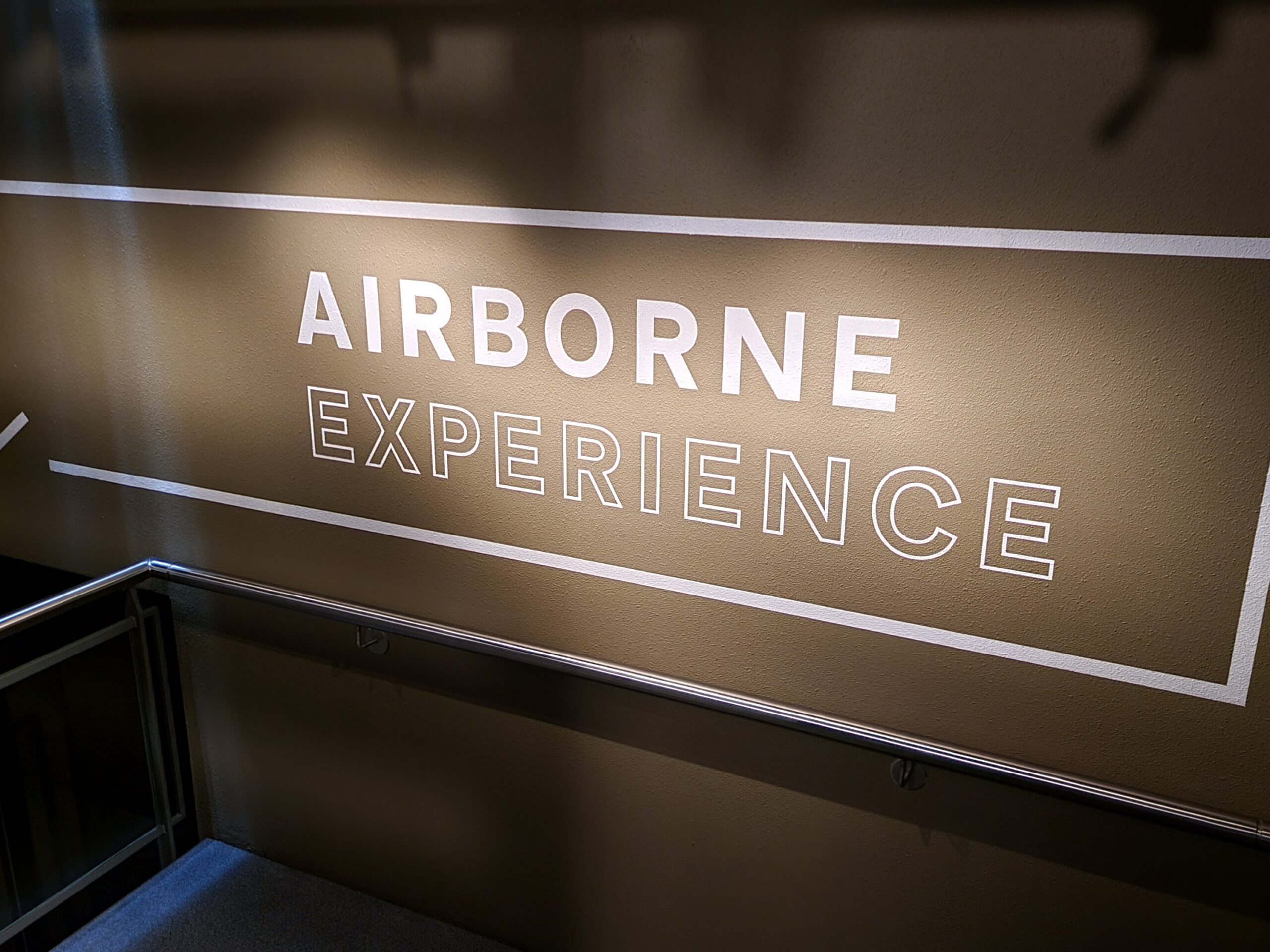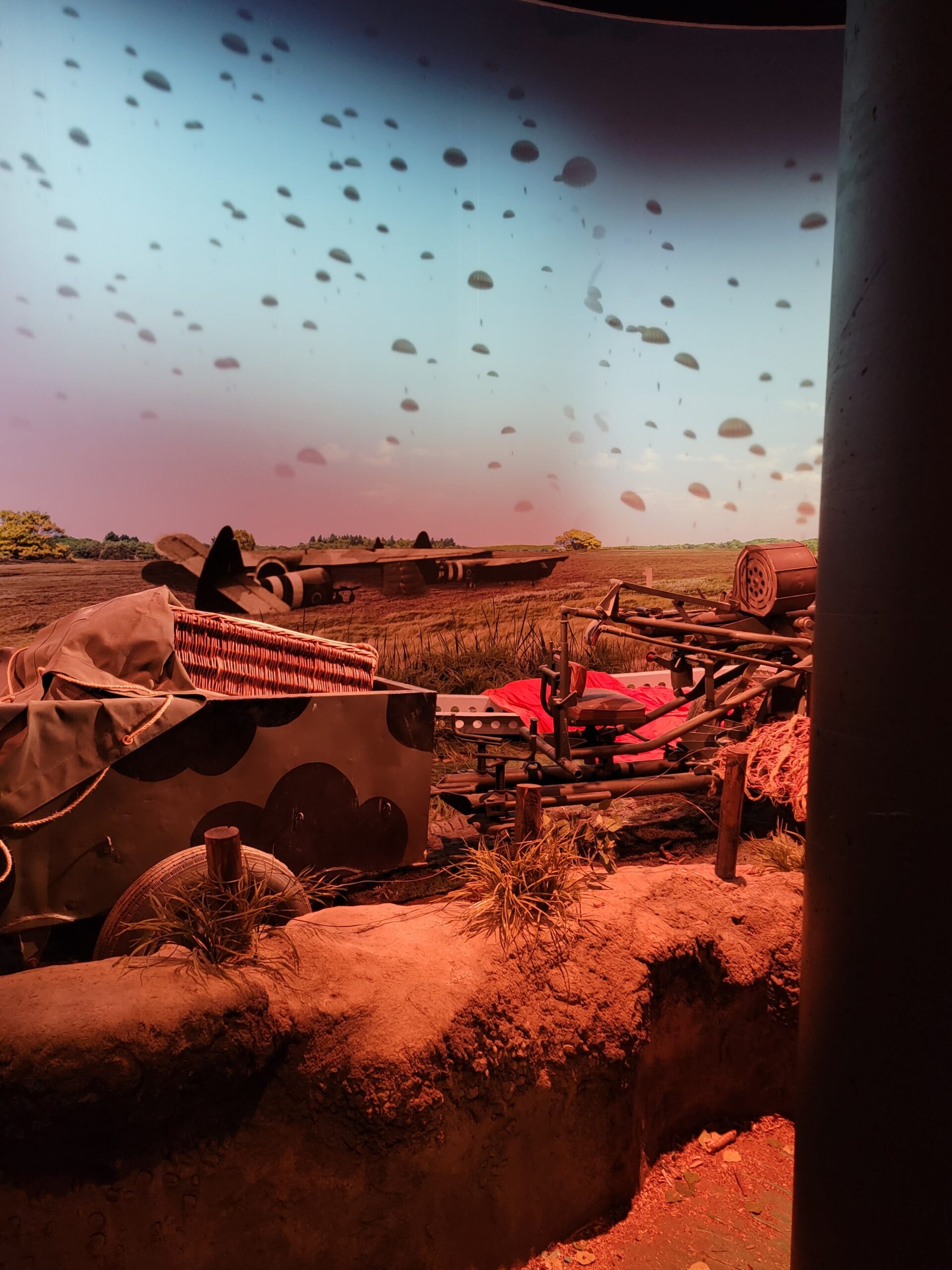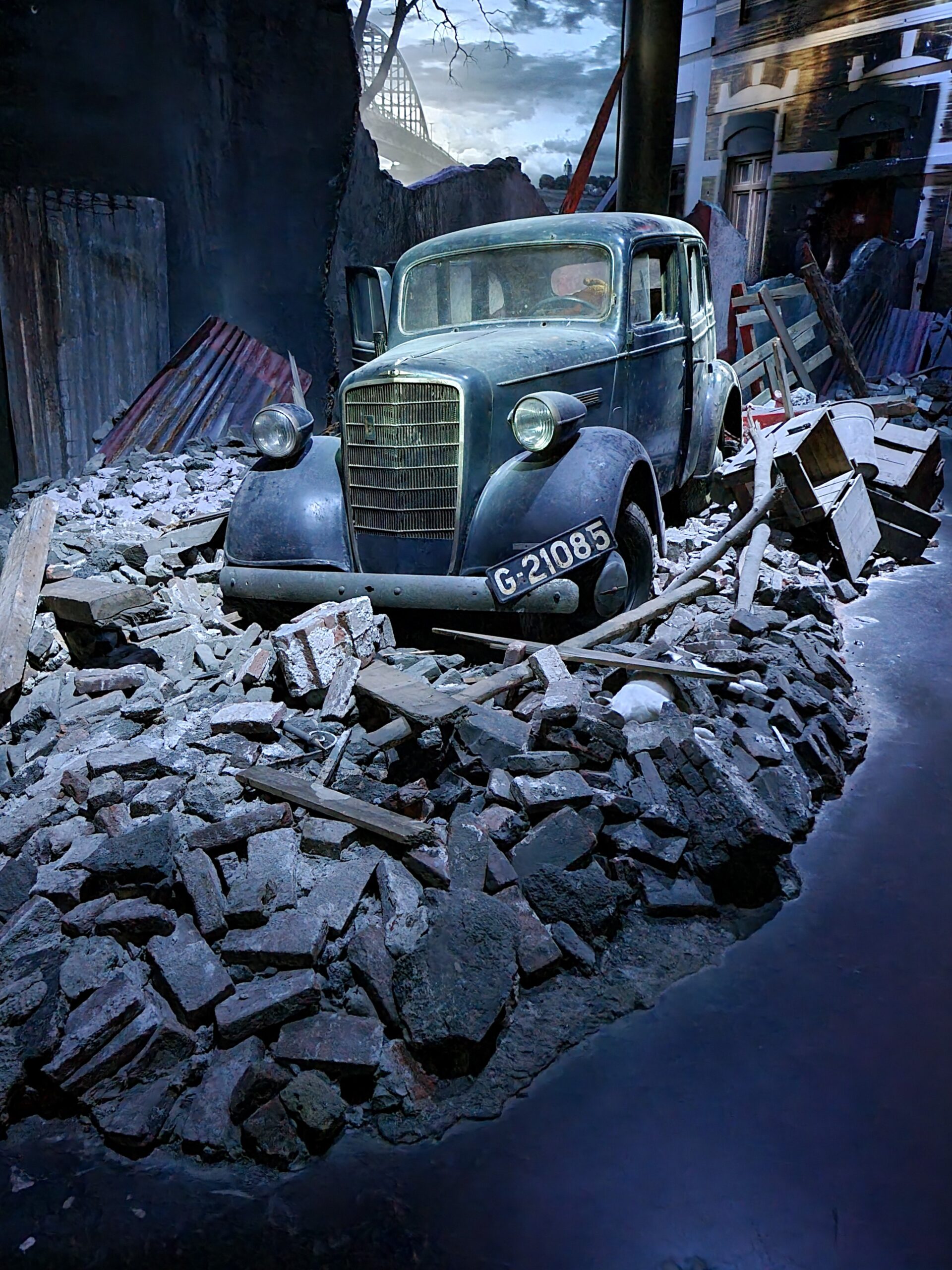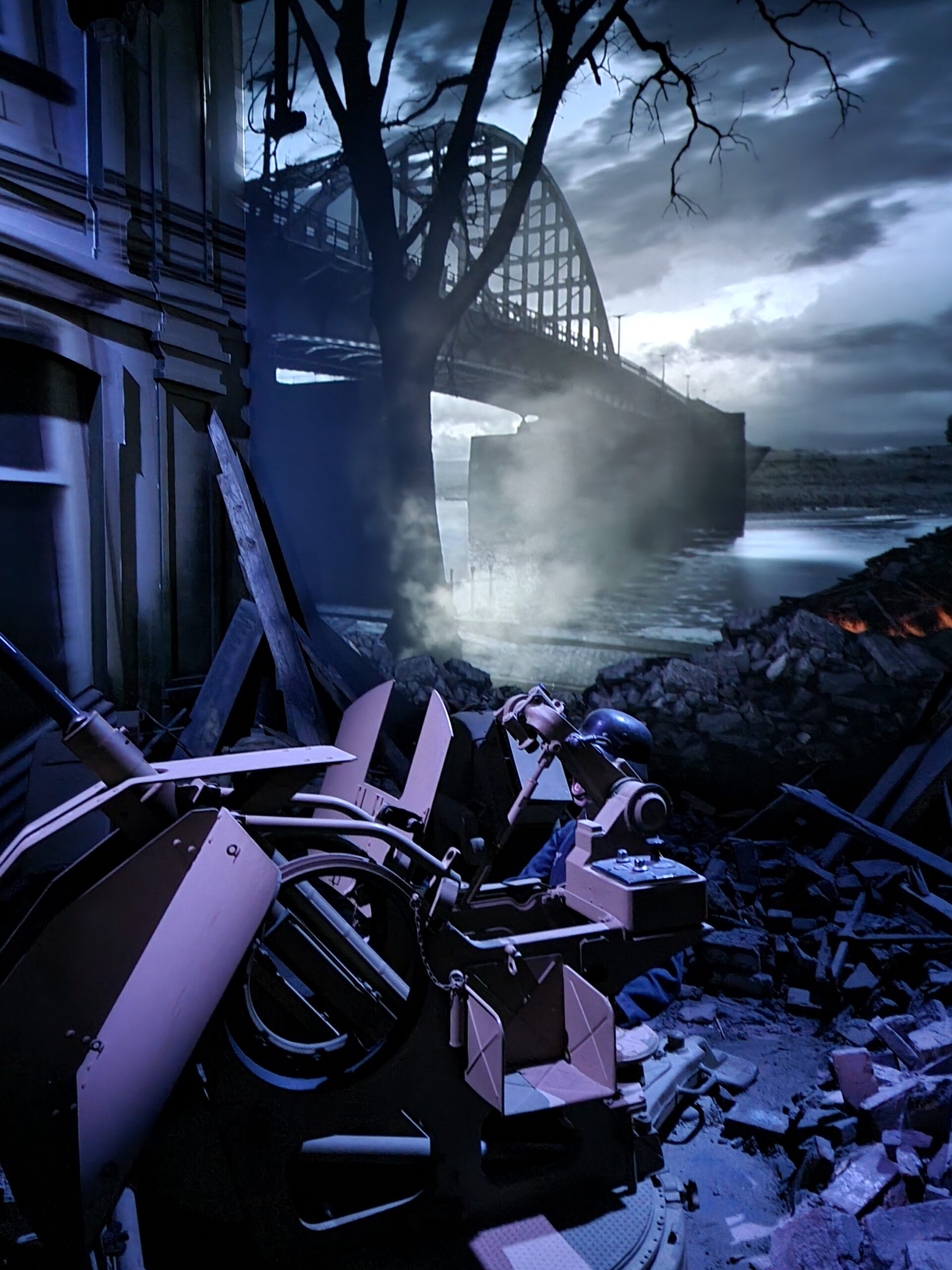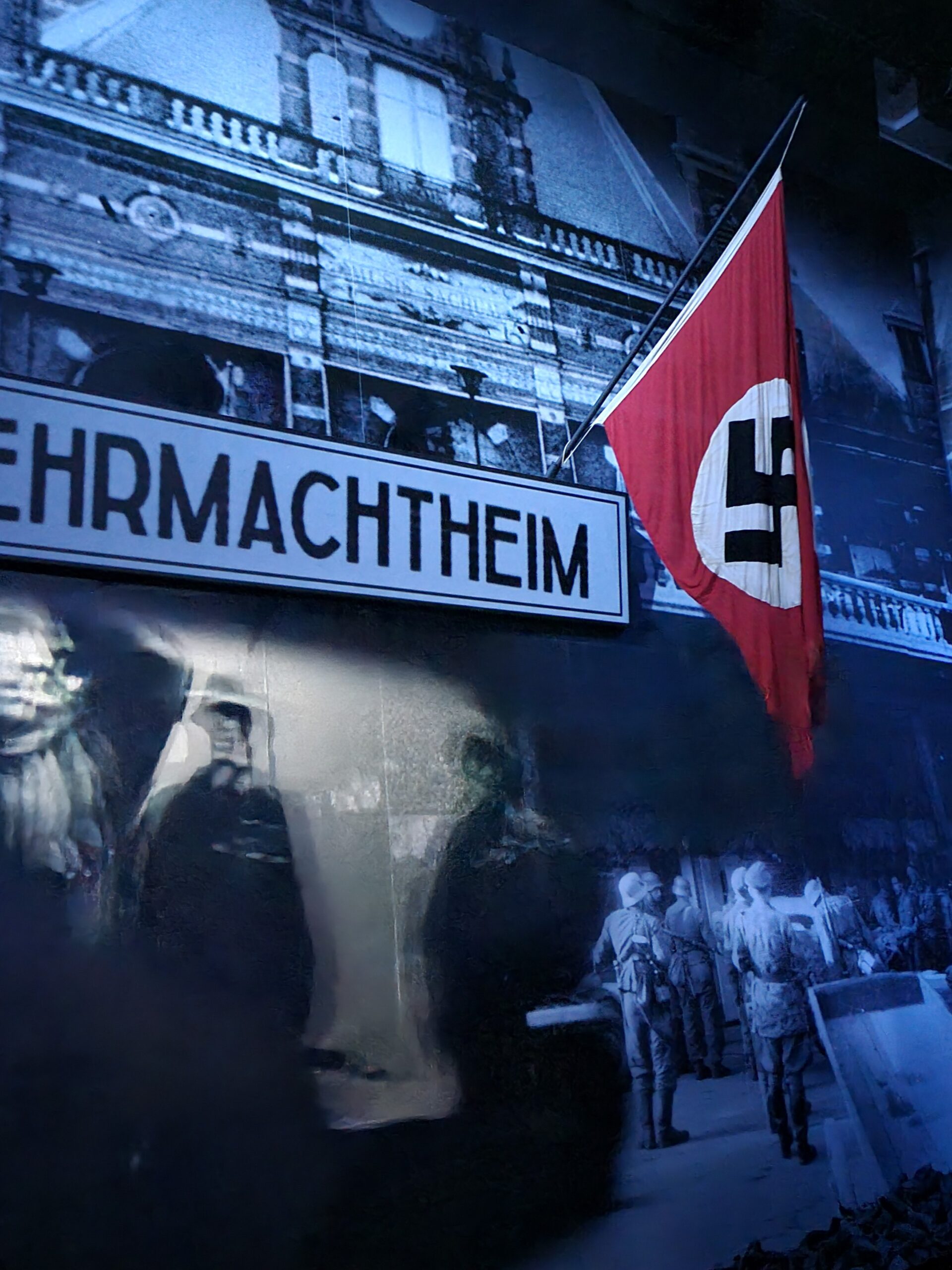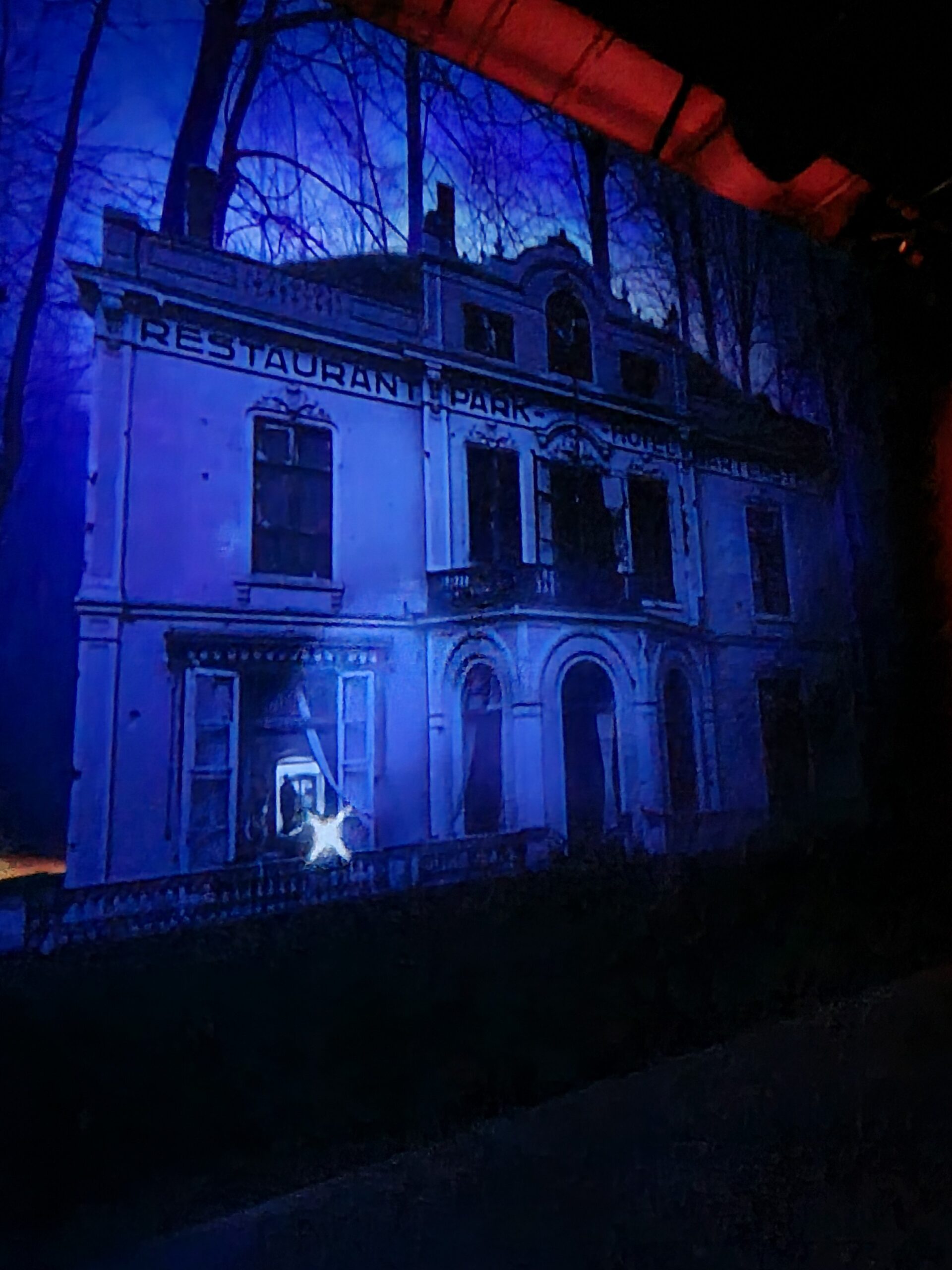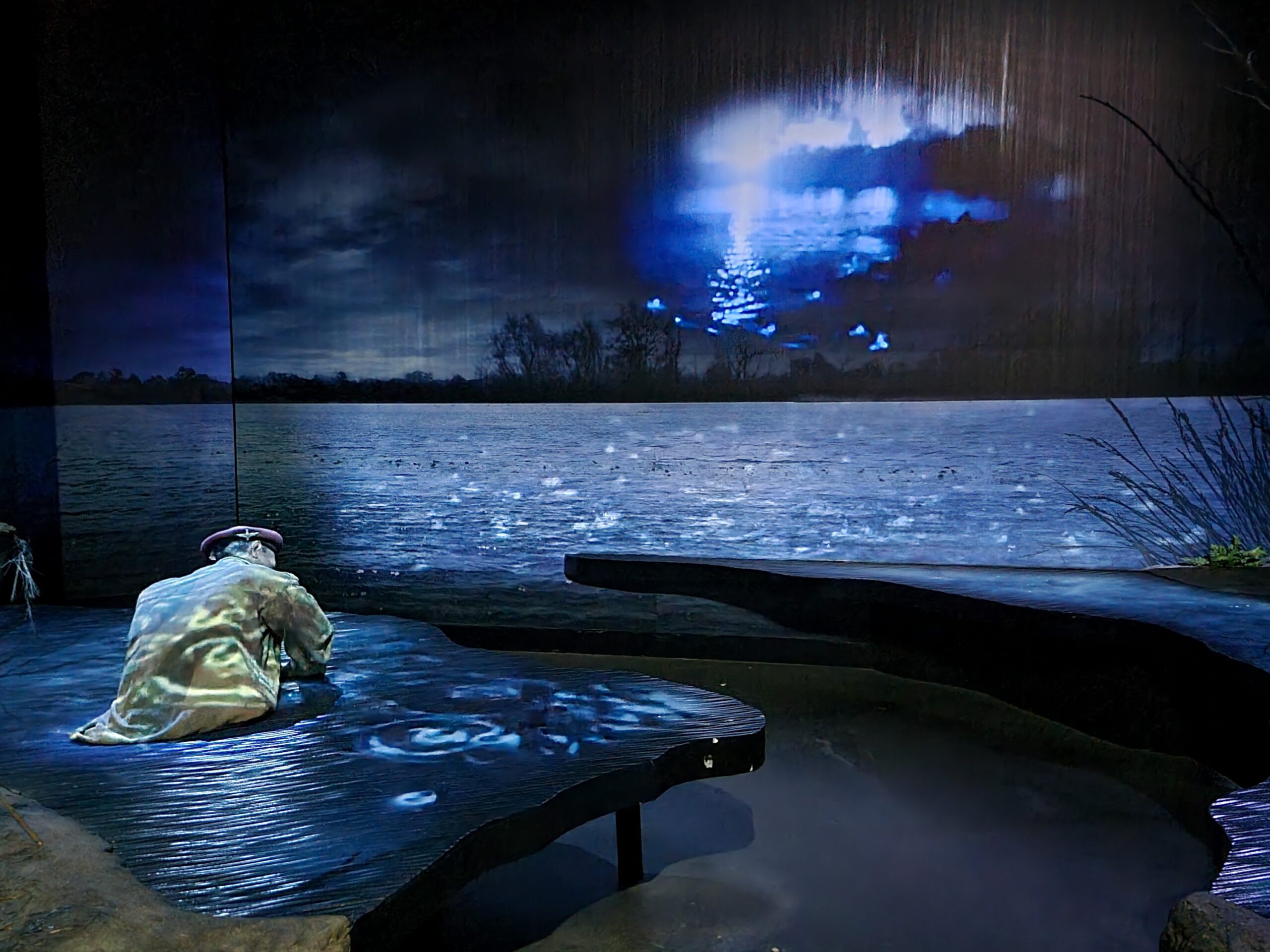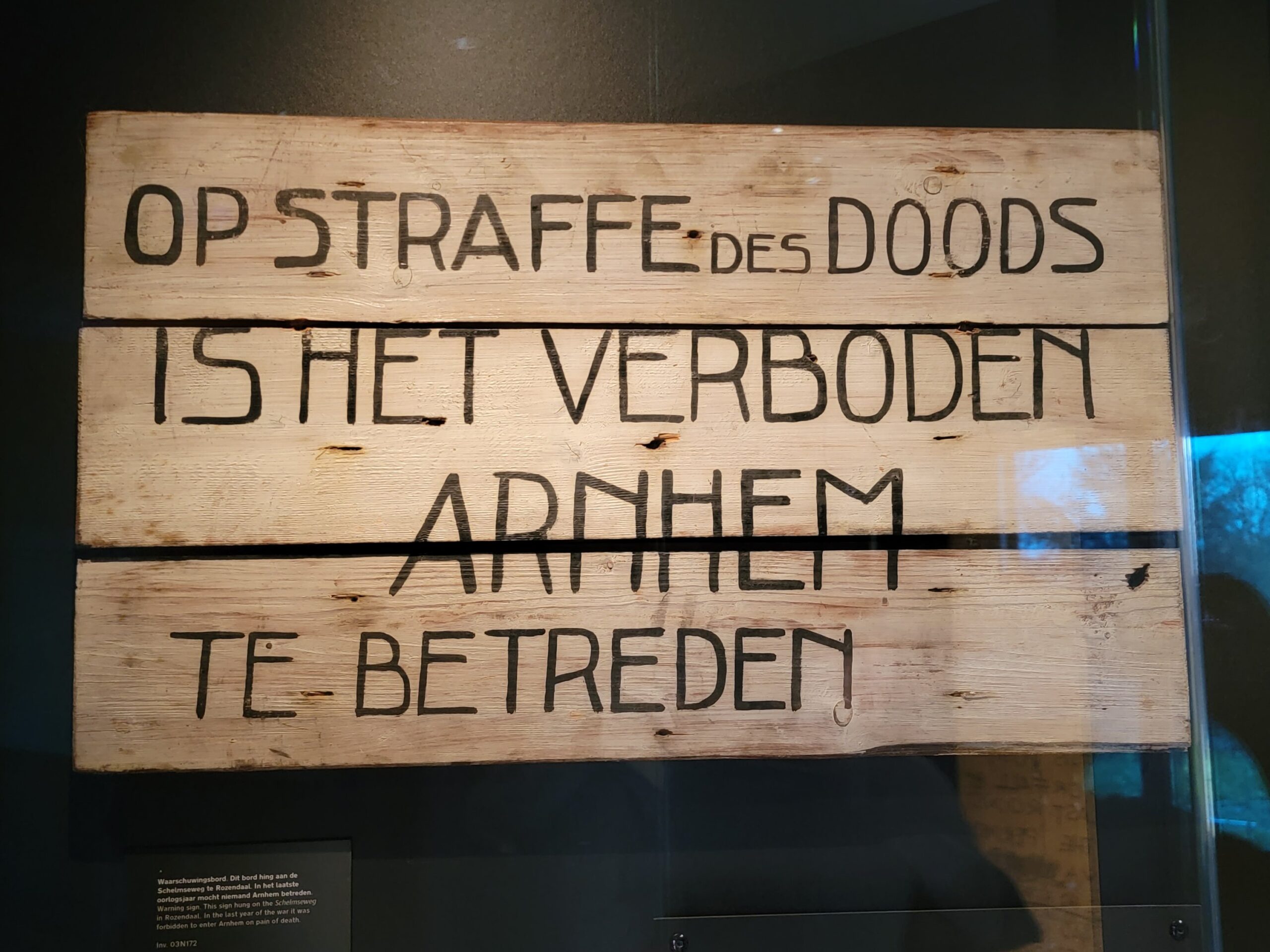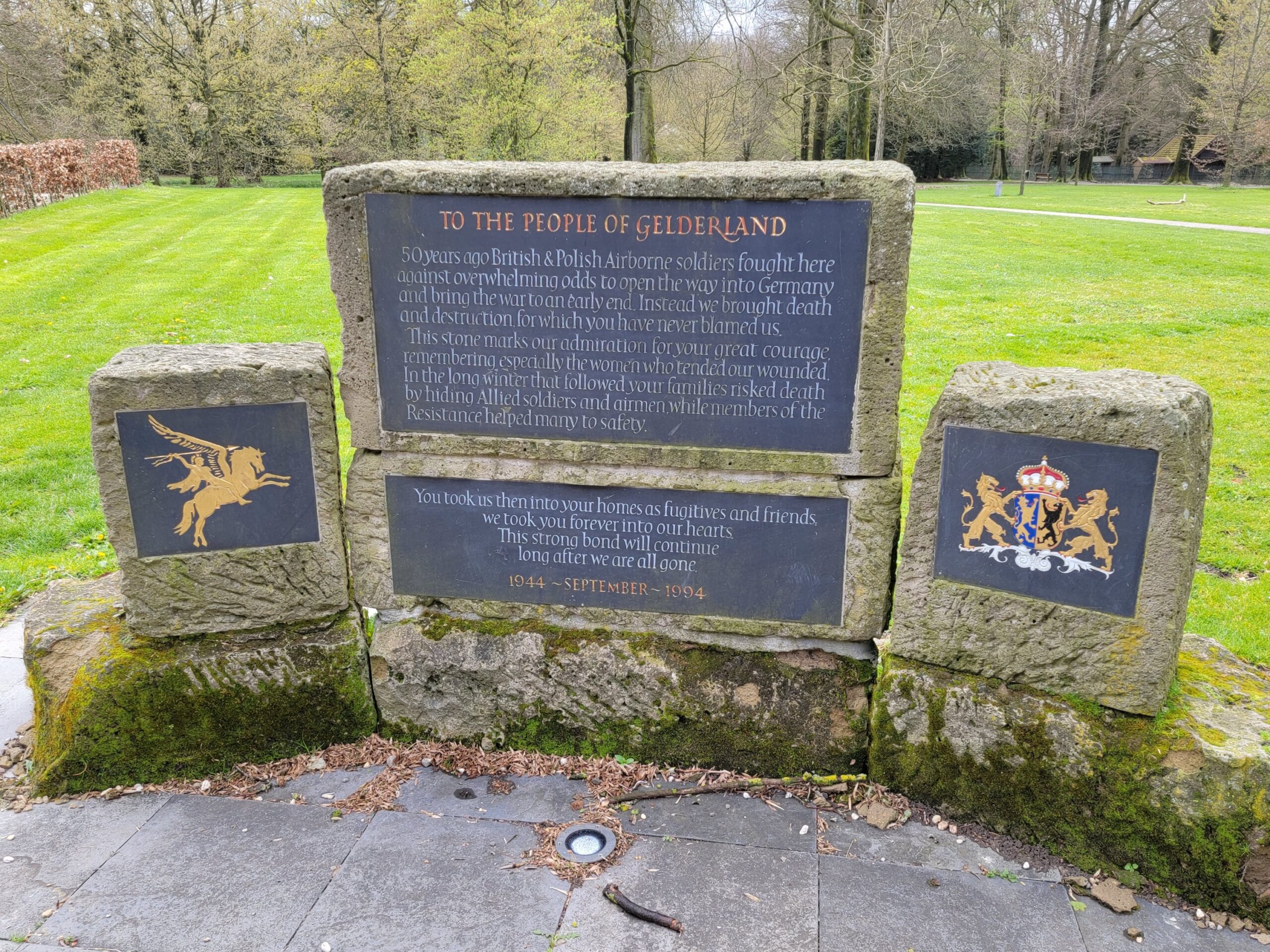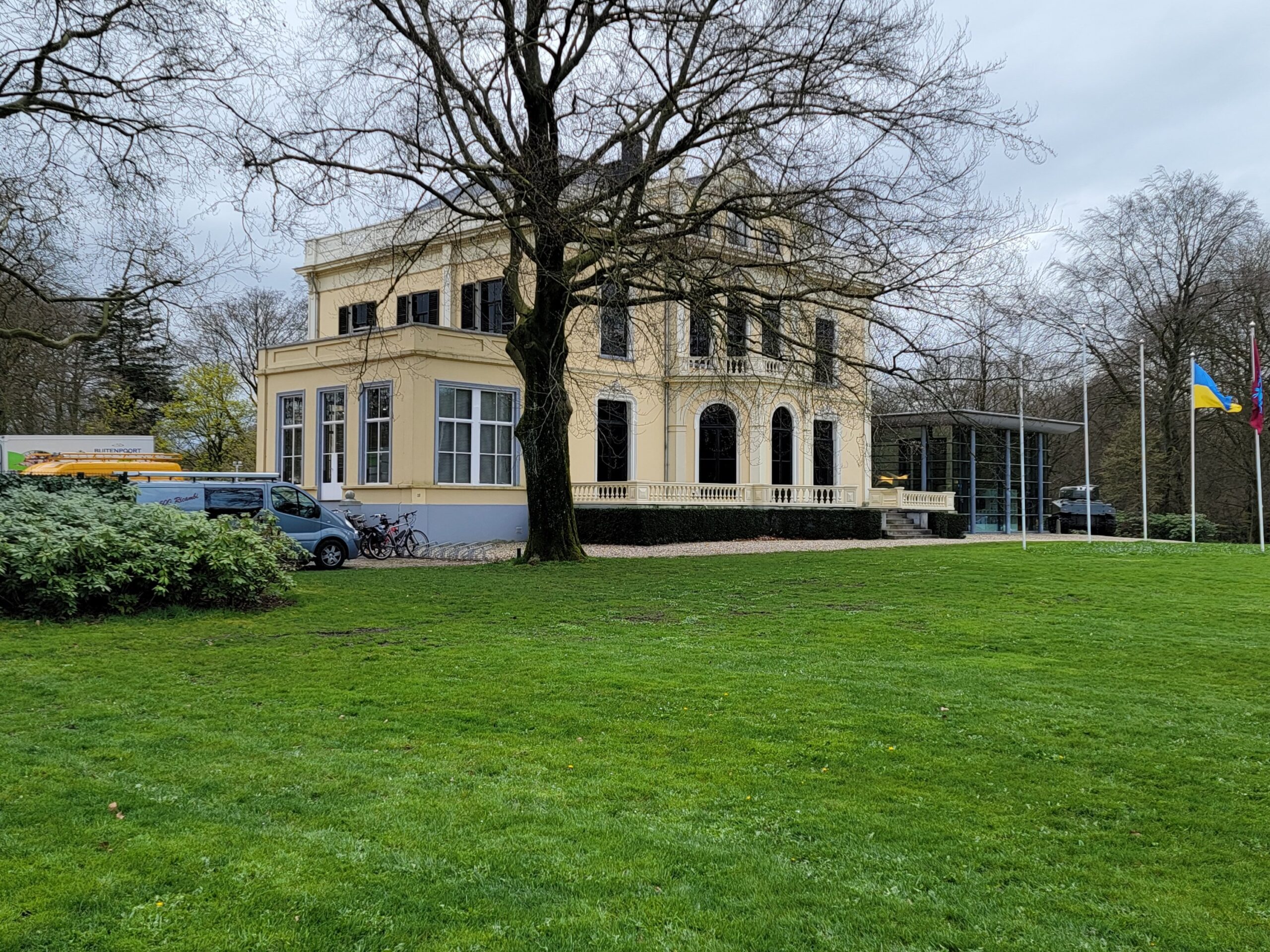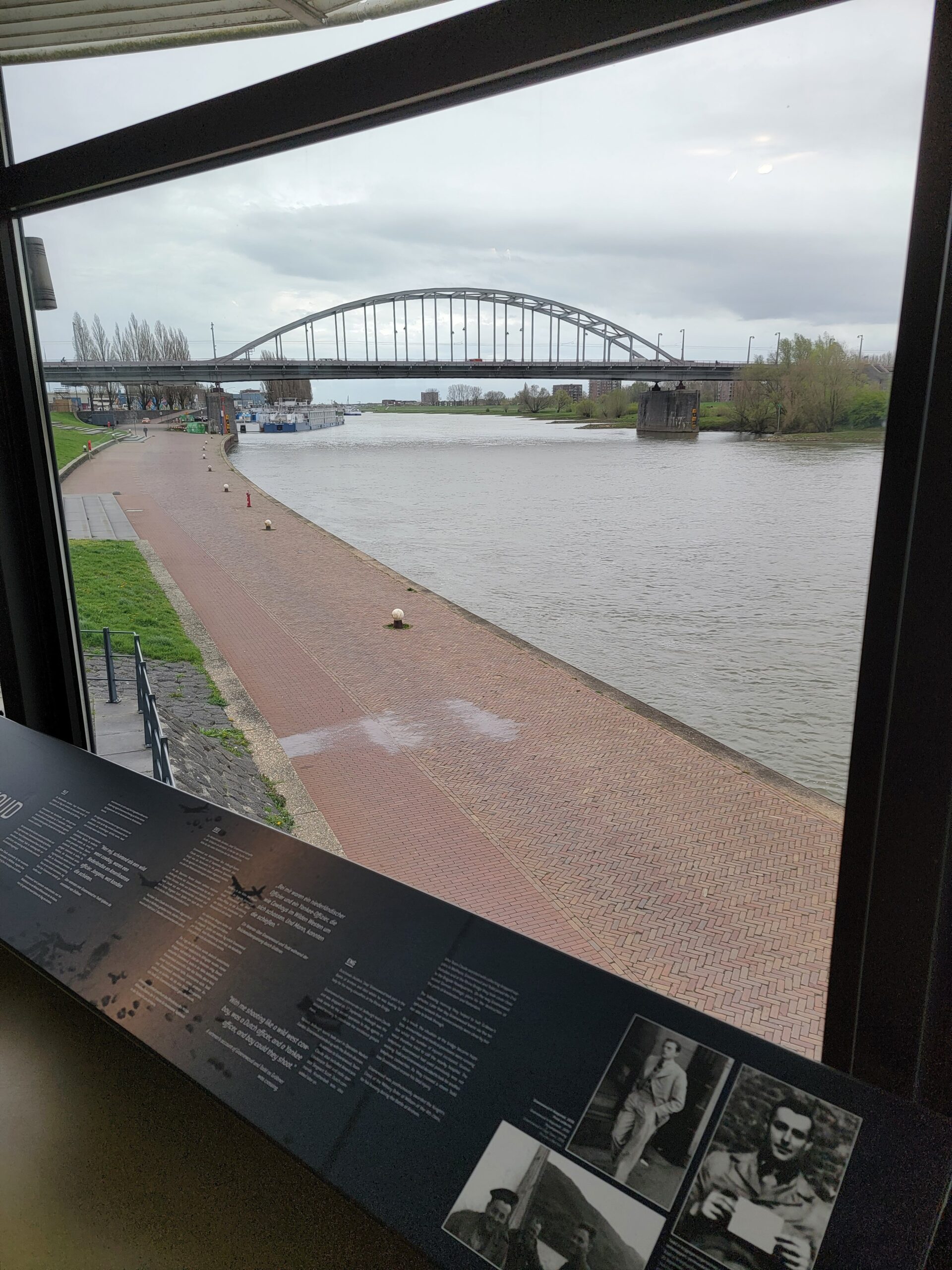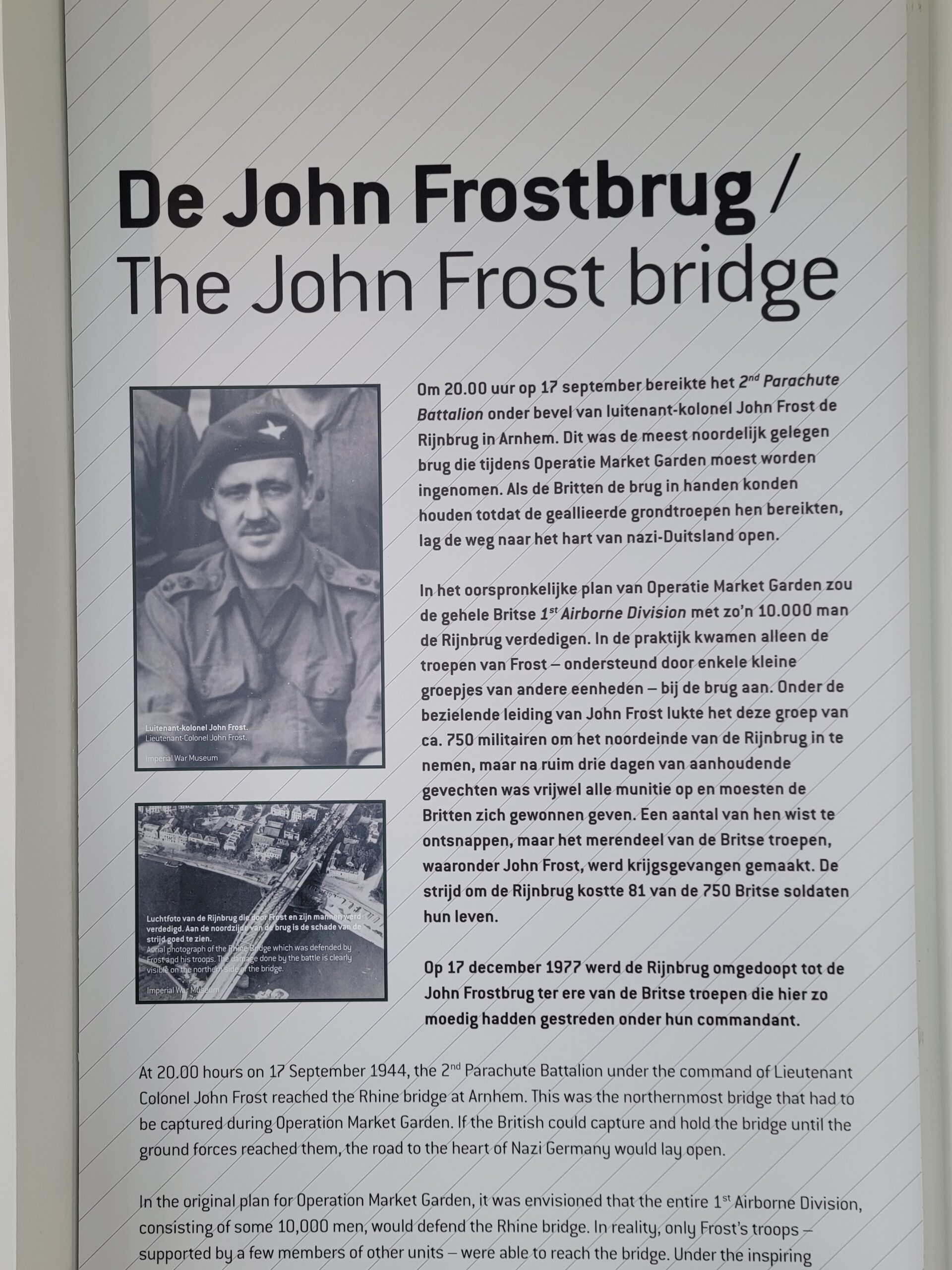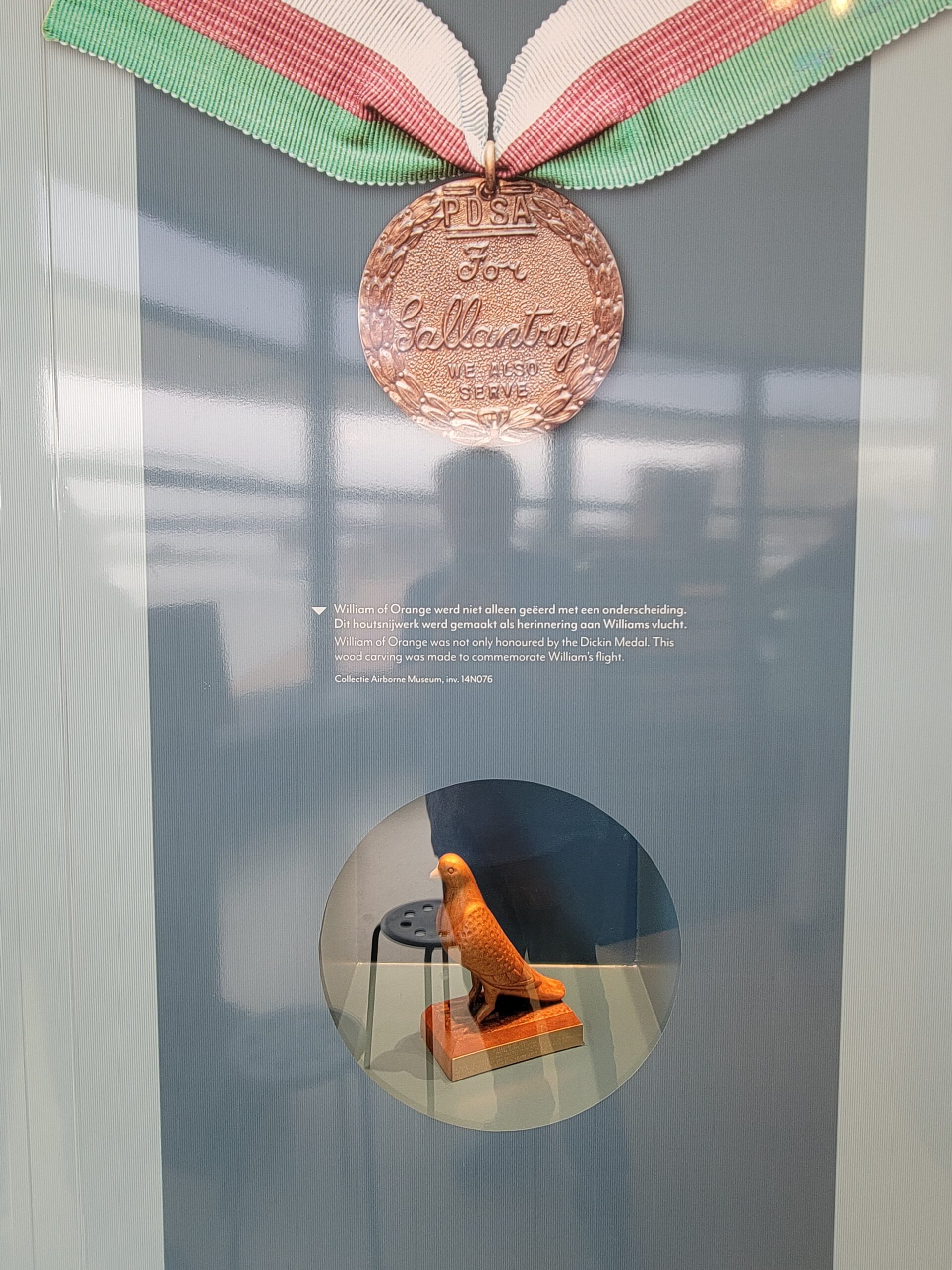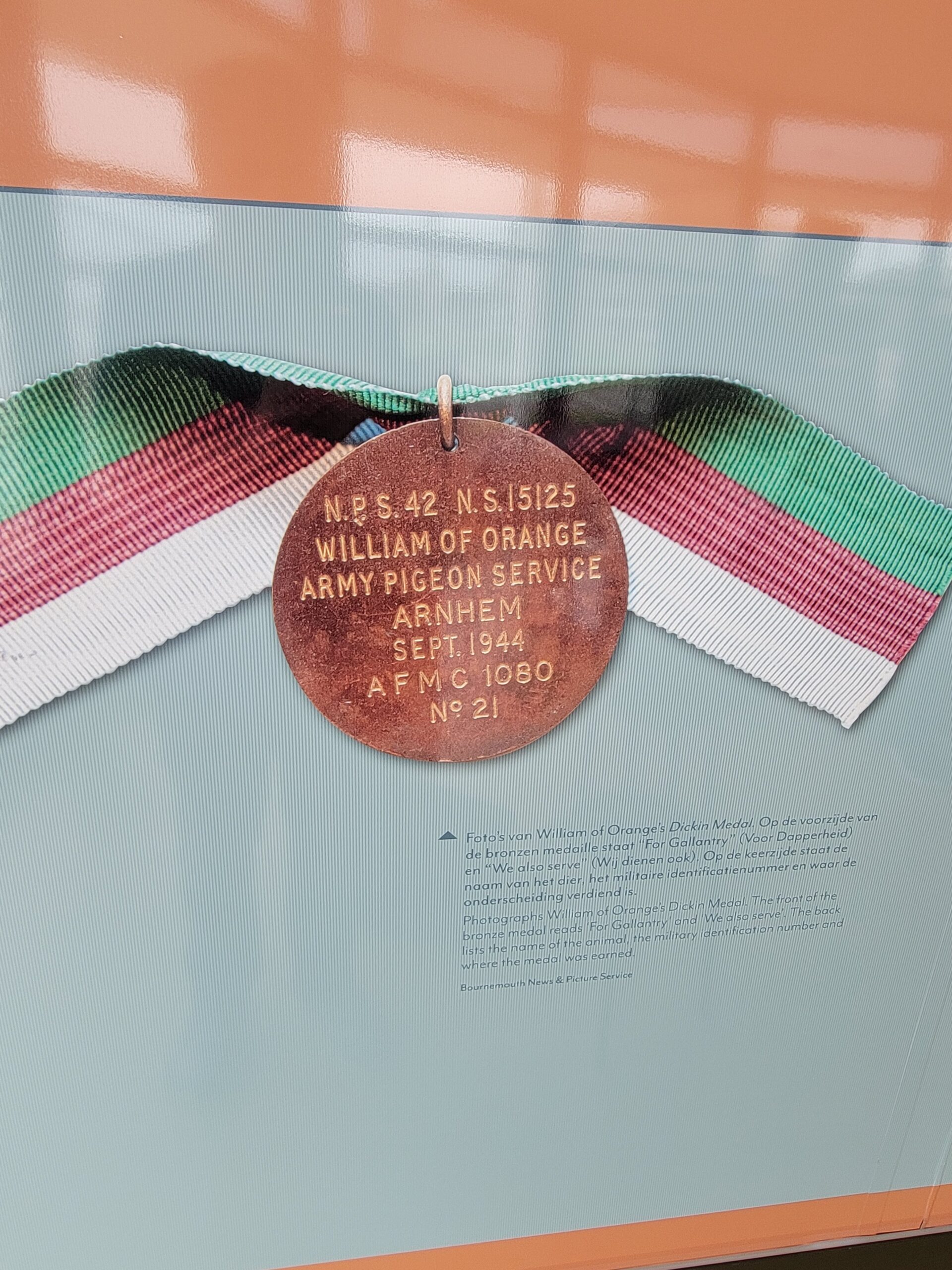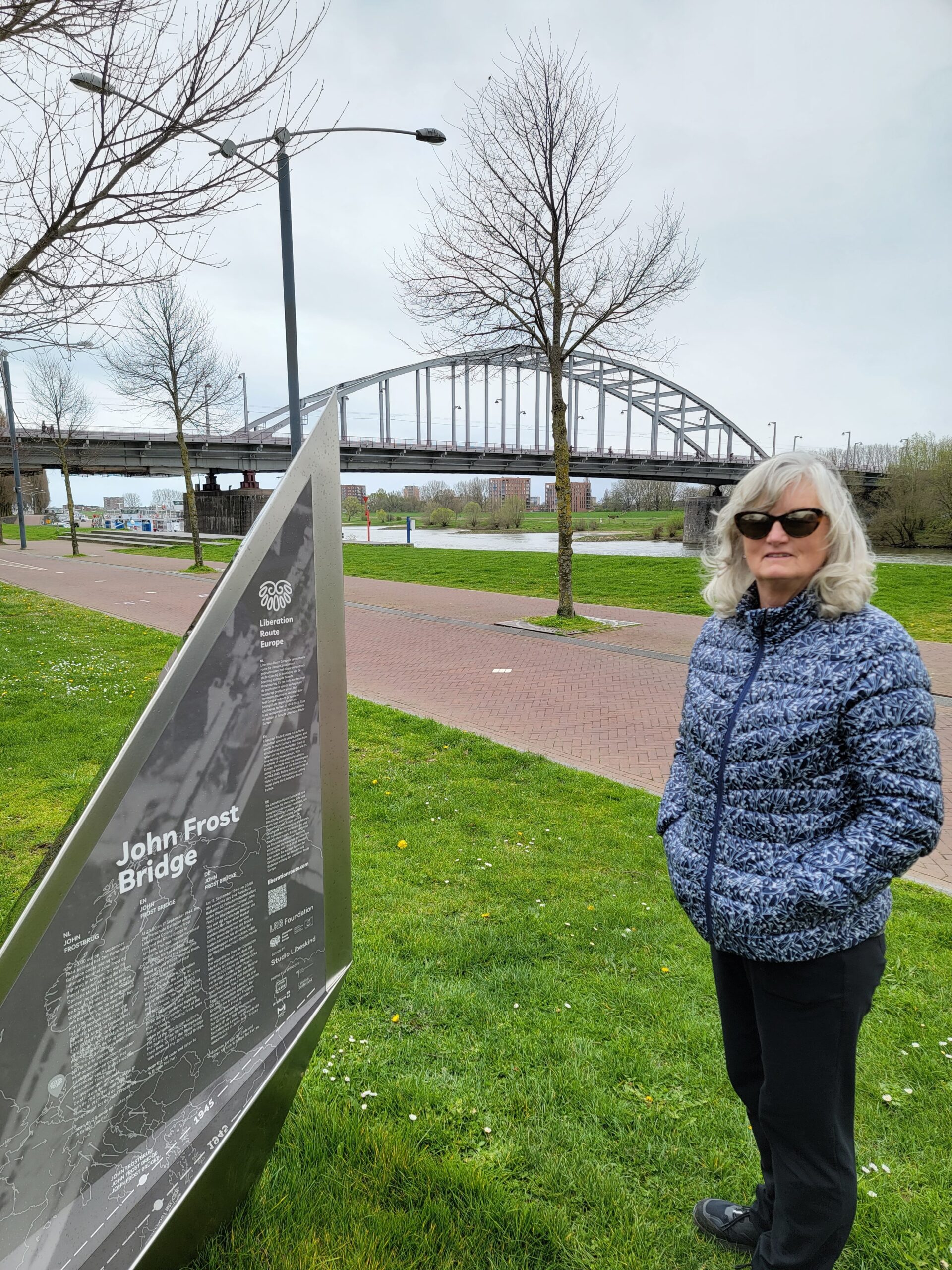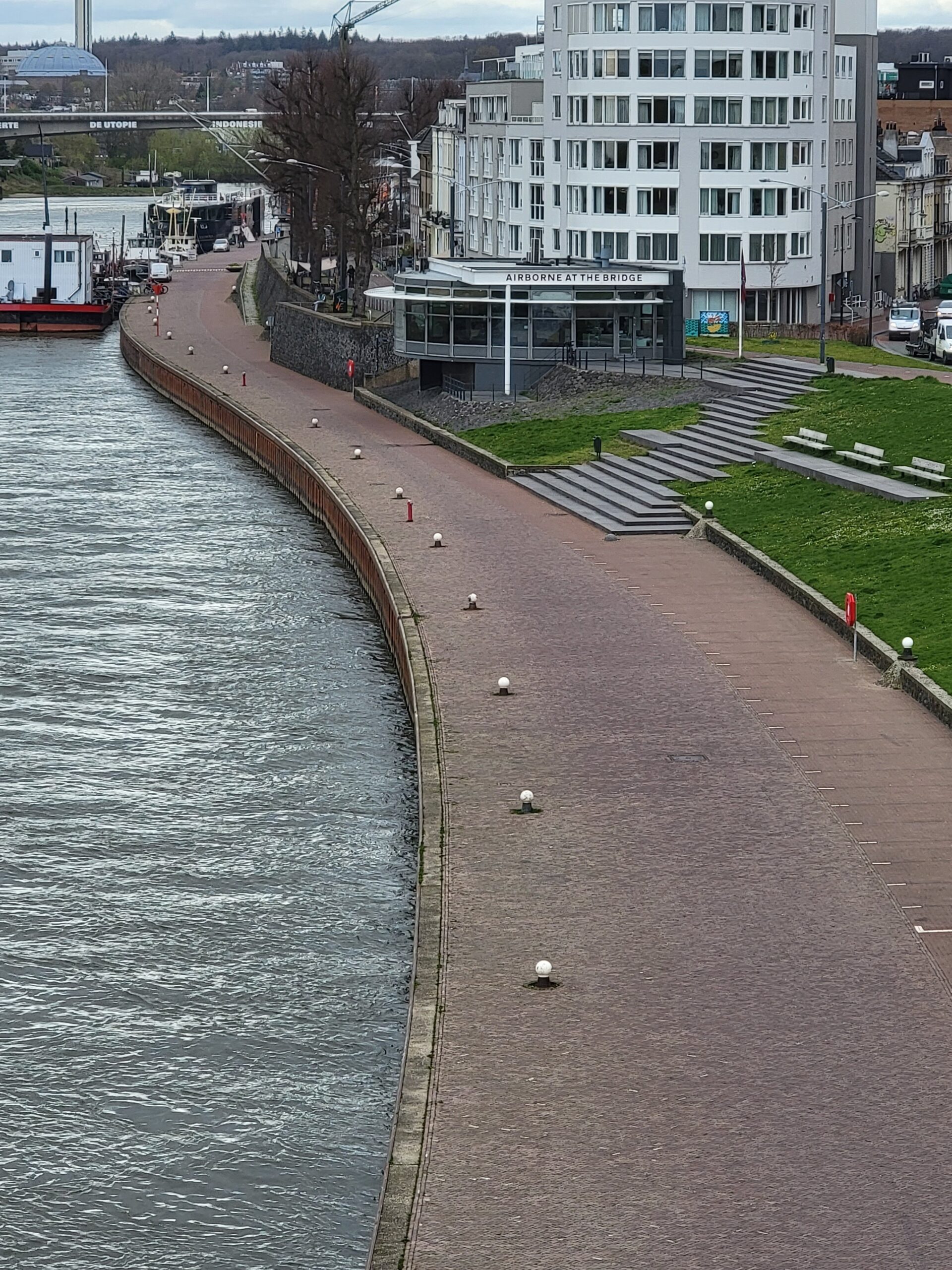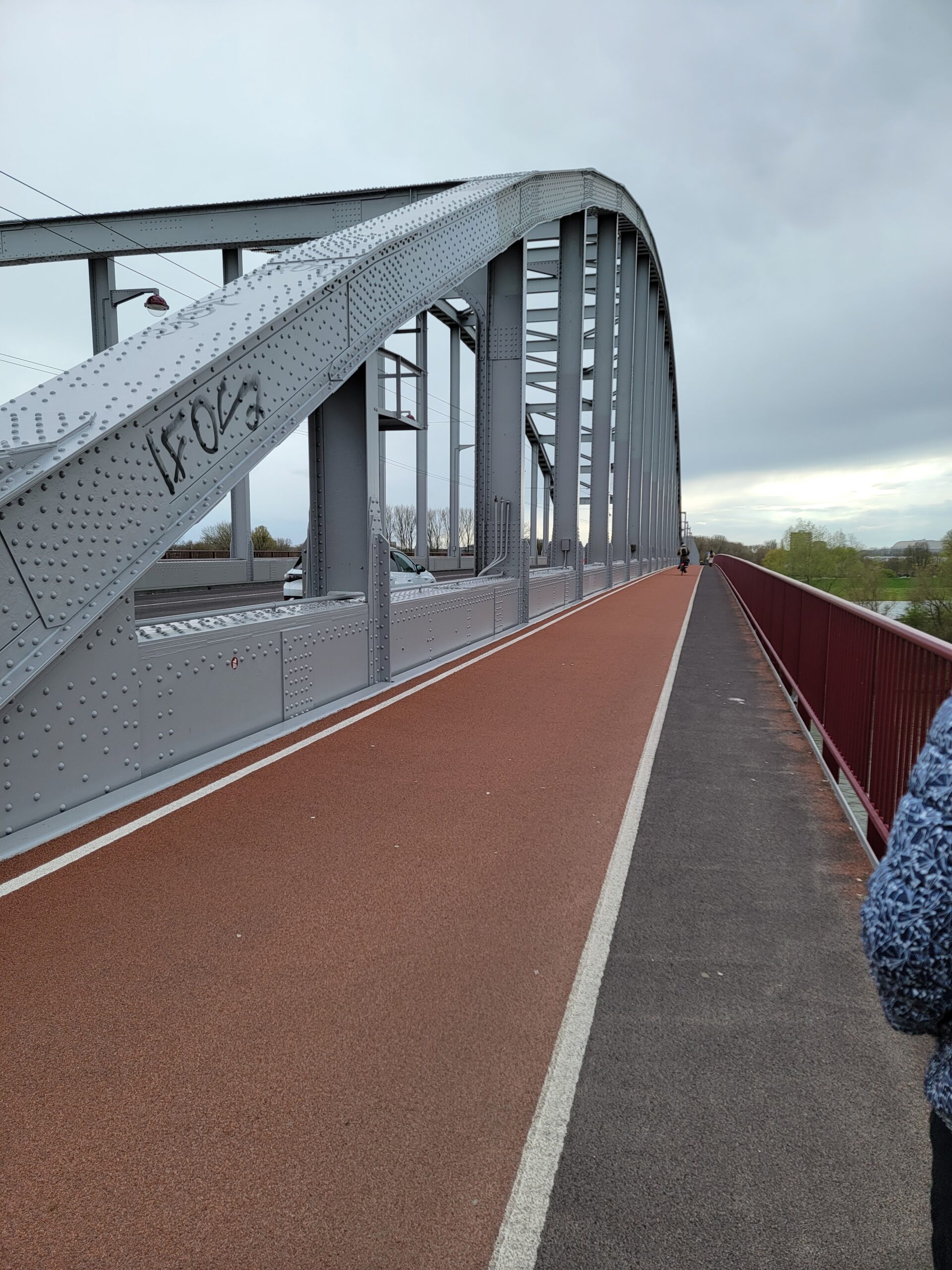We got advice from the always excellent Trip Advisor forums to try the N70 hike just outside of Njimegen, which was about a 35 minute drive from Otterlo. We didn’t do the full hike, but the modified one at about 6km. This is a hilly area in the Netherlands, and as I have previously indicated, that is a rarity!
While the terrain was hilly, it was pretty easy and beautiful hiking.
There was a nice viewpoint looking east towards Njimegen. This plaque indicated what you were looking at. It didn’t really help without binoculars to be honest.
I took a zoom shot with my phone to get some of the Nijmegen skyline. Office buildings, a church, ok. Typical Netherlands city.
There is a restaurant along the hike so you can get some beer and a bite to eat. We had our first Netherlands pancake here, which was basically like a thin crust pizza with meat and cheese on top. Yummy!
This is perhaps the most intense green we’ve seen in the Netherlands. Some might even call it “distinguished”. If you didn’t read the last post, shame on you! This is even greener than the old Windows XP screen!
The next day we drove 15 minutes to the Airborne Museum At Hartenstein in Oosterbeek, just outside of Arnhem, where the objective of Operation Market Garden, the Arnhem Bridge, is located. If you are a fan of war movies, the 1977 movie A Bridge Too Far was based on this battle.
This museum is actually inside what was the Hotel Hartenstein, and became the Allied Headquarters in September 1944 during the battle.
This is from the Remembrance Room that shows many of the decorated British and Polish soldiers from the battle. Families have donated their relatives medals to be put on display here. There are a lot of them. Very cool!
The below is not from Operation Market Garden, but shows a medal that was awarded to the German Heinz Harmel in 1941 for bravery while fighting near Moscow. If you look at his helmet below you will see a bullet hole. He was shot while peering out of a gun turret of his tank. Fortunately for him, the helmet took the impact, and he only sustained an injury to his ear.
Here is a better look at the helmet, with it’s distinctive SS logo.
I took this picture because we just watched All Quiet on the Western Front on Netflix before this trip. Seeing the German dogtag half in the below photo brought back some chilling memories. If you have not seen this movie, do yourself a favor and push it to the top of your watch list!
In the basement of the building is the “Airborne Experience”, where you pretend you have just been dropped into enemy territory.
This was the largest airborne operation of WWII up to this point.
You walk through the ruins of Arnhem on the north side of the bridge. The objective comes into view, the Arnhem Bridge. This was the goal of the operation as it was the only bridge strong enough to bring heavy equipment across the Rhine River. The Allies hoped that by securing it they would have a path directly into Germany, with the hope of ending the war before Christmas.
On September 17th, the Allies advanced towards Arnhem in three battle groups, but only one of the battle groups reached the Arnhem Bridge, the group led by British Lieutenant Colonel John Frost. Unfortunately he couldn’t hold the bridge, and due to lack of ammunition and support, his troops had to surrender on September 20th.
A depiction of Nazi flags and troops in Arnhem. While the Nazi’s were caught completely off guard, they had more than enough troops and tanks in the area to fend off the attack.
After the loss of the Arnhem Bridge, the Hotel Hartenstein was the last stand for the Allies.
After succumbing to heavy fire, a portion of the soldiers escaped by swimming or taking boats provided by the Polish to cross the river, but many, including the injured at the Hartenstein, were taken prisoner.
After the failure of Operation Market Garden, the Nazi’s forced all of Arnhem’s citizens to evacuate. This sign was posted on roadways, indicating that it was “forbidden to enter Arnhem on pain of death”. People thought they would only have to vacate their homes for a week or two, but it would be 9 more months before the war ended.
The battle was considered a failure, and the citizens of Arnhem paid a heavy price with lives and property, but the attitude towards the Allies has always been positive, with annual remembrances for those who fought and died in the battle. The below sign acts as a sort of apology to the locals who were impacted.
The exterior of the museum today. It’s definitely a must see if you are in the area. By the way, they have a video that is WAY WAY better than the Overloon museum in telling the story of Operation Market Garden! It’s the first time the details of the battle has made any sense to us.
We then drove 5 minutes into Arnhem, and visited the Airborne At The Bridge museum. This museum is free to enter, and staffed by historical nerd volunteers that will tell you anything you want to know! When I mentioned the Overloon museum, one of them scoffed and said the Hartenstein was soooo much better. Even the Dutch locals agree! The below is the view of the bridge from the museum.
The bridge was renamed in 1977 for John Frost, who attempted to hold the bridge against a much stronger Nazi force.
Carrier pigeons were used during WWII to send messages, and this display showed a medal (the Dickin Medal) that was awarded to a carrier pigeon. A total of 54 of these awards were earned by animals due to their actions during WWII. There were 32 given to pigeons, 18 to dogs, 3 to horses and 1 to a cat. I want to find out what the cat did? Did he scratch an SS Officer??
Here is a close up of the pigeon medal. I’ll bet this bird never had to pay for a chunk of bread again!
We then walked over to the bridge. It’s been rebuilt since WWII, due to the fact that after we couldn’t take the bridge we decided to bomb it. Typical male behavior…if I can’t have it, nobody can!!
The view of the museum from the bridge. It’s really got an excellent location!
The bridge up close. The reconstruction is fairly accurate to the original, since they used the same engineer who built the original.
Next up, we head to Zwolle, and stop to see some wood and sand sculptures on the way.

